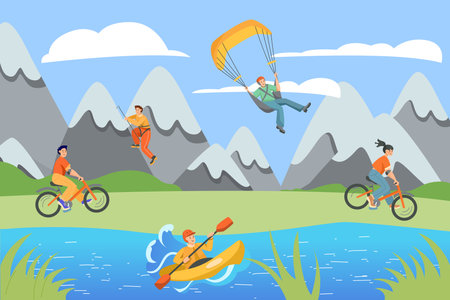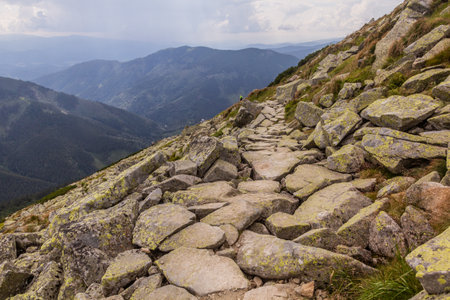Introduction to Trail Injuries
Hiking through America’s wild places is an adventure, but the trail doesn’t always play nice. Whether you’re trekking through Rocky Mountain switchbacks or scrambling up California’s rugged coastlines, musculoskeletal injuries are a real risk for hikers of all experience levels. Sprains, strains, and broken bones top the list of mishaps you might face miles away from help. Being prepared isn’t just about packing snacks and water—its knowing what can go wrong, and how to handle it when it does.
What Are Musculoskeletal Injuries?
Musculoskeletal injuries affect your muscles, bones, ligaments, and tendons. On the trail, these injuries often happen in a split second: a twisted ankle on loose gravel, a misstep off a rock ledge, or even just overuse after a long day. Here’s an at-a-glance look at the most common types:
| Injury Type | Description | Common Trail Causes |
|---|---|---|
| Sprain | Ligament stretched or torn (usually at joints like the ankle) | Rolling your ankle on uneven ground; sudden twists |
| Strain | Muscle or tendon stretched or torn | Lifting heavy packs; sudden forceful movements; fatigue |
| Fracture (Broken Bone) | A crack or break in the bone structure | Falls from height; direct impact with rocks or logs |
The Realities of Wilderness Risks
Out in the backcountry, there’s no quick fix or easy escape route. Cell service is spotty, rescue teams could take hours to reach you, and sometimes you’re your only lifeline. This means understanding these injuries isn’t just smart—it’s essential survival knowledge. Whether you’re hiking solo in the Appalachians or leading a group in Zion, knowing how to recognize and react to sprains, strains, and fractures can make all the difference between a minor setback and a major emergency.
2. Recognizing Sprains, Strains, and Fractures
Out on the trail, it’s easy to brush off pain and keep moving. But that attitude can turn a minor injury into a big problem fast. Here’s your hard-nosed guide to figuring out if you’re dealing with a sprain, a strain, or a broken bone when help might be hours away.
Sprains vs. Strains vs. Fractures: Know the Difference
Sprains, strains, and fractures can all knock you off your feet—but they aren’t the same thing. Here’s how to spot what’s going on:
| Type | What It Is | Common Signs | Typical Causes on the Trail |
|---|---|---|---|
| Sprain | Stretching or tearing of ligaments (the bands connecting bones at joints) | Pain around a joint, swelling, bruising, limited ability to move joint, may hear/feel a pop at time of injury | Rolling an ankle on uneven ground, twisting a knee during a slip |
| Strain | Stretching or tearing of muscles or tendons (connect muscle to bone) | Pain in the muscle itself, muscle spasms, weakness, swelling, cramping | Lifting heavy packs wrong, sudden sprint to catch up with the group |
| Fracture (Broken Bone) | A break in the bone—can be hairline or complete snap | Severe pain at site, deformity or abnormal angle, inability to use limb, swelling, possible bone protrusion through skin (open fracture), grinding sensation | High-impact fall, landing hard after slipping from rocks or logs |
Hard-Nosed Field Checks for Injuries
Ankle and Wrist Sprains/Strains
If someone twists their ankle or wrist and can still move it (even if it hurts), check for swelling and bruising. If they can bear weight (for ankles) or grip lightly (for wrists), its probably not broken—but don’t push it. Splint and rest as much as possible.
Bones Out of Place? Suspect a Fracture
If something looks crooked or there’s a weird bump where there shouldn’t be—or if moving it makes them want to scream—assume it’s broken. Don’t try to “pop” anything back in place. Splint it right where it is and get help.
Quick Trail Test: “Can You Walk?” Rule for Legs/Feet
If the injured person can walk four steps without collapsing from pain, odds are better that it’s just a sprain or strain—not a break. But pain and swelling mean you should still treat it seriously.
Pain Level Isn’t Everything—Watch for Shock
Sometimes adrenaline masks serious injuries. Look for pale skin, sweating, rapid pulse—these are signs someone could be going into shock from blood loss or pain (especially with open fractures). Keep them warm and calm while you figure out your next move.

3. Immediate First Aid Steps
Stay Calm and Assess the Situation
When someone gets hurt on the trail, your first move is to keep your cool. Take a moment to check the scene and make sure there’s no ongoing danger—like falling rocks or unstable ground. Before you jump in, ask yourself: Is this a sprain, strain, or a possible broken bone? If you’re not sure, treat it as serious until proven otherwise.
Stabilize the Injury
Keeping the injured body part still is priority number one. Movement can make things worse fast, especially with fractures. Here’s what you need to do:
| Type of Injury | How to Stabilize |
|---|---|
| Sprain/Strain | Wrap snugly (not too tight) with an elastic bandage or clean cloth. Immobilize using a splint if available. |
| Suspected Broken Bone | Straighten only if there’s no pulse below the injury. Otherwise, splint it in place as found. Use sticks, trekking poles, or rolled-up clothing for support. Secure above and below the break. |
DIY Splinting Materials You Can Use:
- Trekking poles or sturdy sticks
- Rolled-up jackets or shirts
- Duct tape, shoelaces, or bandanas for tying
Pain Management and Swelling Control
Pain can knock even tough hikers off their game. Do what you can to help:
- Ice (if available): Wrap ice or cold packs in fabric and apply to the area for 20 minutes at a time.
- Elevation: Raise the injured limb above heart level to minimize swelling.
- Pain Relievers: If the person isn’t allergic, over-the-counter meds like ibuprofen or acetaminophen help take the edge off.
- Compression: A snug wrap keeps swelling down but don’t cut off circulation.
Prevent Further Harm While Waiting for Help or Moving Out
If you have cell service or a satellite messenger, call for help if it’s a possible fracture or severe injury. If you must hike out:
- Avoid bearing weight on injured legs/ankles.
- Create makeshift crutches from branches if needed.
- Move slowly and carefully; don’t rush it.
- If in doubt, stay put and signal for help.
4. Improvised Splinting and Support
Why Splinting Matters on the Trail
If you or your hiking buddy suffer a bad sprain, strain, or even a suspected broken bone miles from help, stabilizing the injury is priority number one. An improvised splint keeps things from getting worse, reduces pain, and makes self-rescue possible. Forget fancy first aid kits—this is all about American resourcefulness and using what’s in your backpack or the woods around you.
How to Build an Effective Splint
You don’t need medical supplies to make a solid splint. You just need something rigid for support, padding for comfort, and strong material to tie everything in place. Here’s how to get it done:
| What You Need | Examples from Your Pack | Examples from Nature |
|---|---|---|
| Rigid Support | Trekking poles, tent stakes, cooking utensils, sturdy water bottles | Sticks, branches (thumb-thick and straight), bark strips |
| Padded Layer | Clothing, spare socks, towels, sleeping pad pieces | Moss, leaves, soft grass |
| Ties/Bandages | Belt, bandana, shoelaces, paracord, pack straps | Ivy vines (non-poisonous), strips of cloth torn from shirts |
Step-by-Step: DIY Splinting in the Wild
- Don’t move the injured limb more than necessary.
- Pile on padding: Place a soft layer between the skin and your rigid supports to prevent chafing.
- Add rigid supports: Lay sticks or trekking poles alongside the limb—one on each side if possible.
- Wrap it up: Use whatever ties you’ve got to secure the whole setup snugly. You want it tight enough for stability but not so tight that it cuts off circulation.
- Sling if needed: For arm injuries, make a sling out of a shirt or bandana tied behind the neck.
- Check circulation: Watch fingers or toes for swelling, numbness, or color changes. Loosen if necessary.
Quick Reference: Limb Positioning Table
| Injury Location | Best Position for Splinting | Sling Needed? |
|---|---|---|
| Ankle/Foot | Straight in line with leg; foot at 90 degrees if possible | No (unless non-weight-bearing) |
| Knee/Leg | Straight; splint above and below the joint if possible | No |
| Wrist/Forearm | Straight but comfortable; support hand in natural position (like holding a soda can) | Yes (use a bandana or shirt) |
| Elbow/Upper Arm | Bent at 90 degrees if possible and comfortable; pad between arm and body if needed | Yes (improvise with clothing) |
The American DIY Spirit: Adapt and Overcome!
No gear? No problem. Americans have always been great at making do with what’s around. Don’t be afraid to rip up old T-shirts or sacrifice some paracord if it helps someone walk out safe. Just remember—keep calm, think clearly, and use what you’ve got. Your ingenuity is your best tool in the backcountry.
5. When and How to Hike Out or Call for Help
Tough decision-making in the backcountry
When you or your hiking buddy suffers a sprain, strain, or broken bone on the trail, your next move can make all the difference. It’s not always clear whether you should try to hike out or call for help. This is where real survival skills kick in: weighing the risks, reading the situation, and making a smart call.
Assessing the Situation
Before doing anything else, take a breath and check:
- Level of injury: Is it a mild ankle sprain, or is there a bone poking through skin?
- Location: How far are you from the trailhead or nearest help?
- Weather and daylight: Is a storm rolling in? How much daylight is left?
- Resources: Do you have enough food, water, and first-aid supplies?
- Communication: Do you have cell service or a satellite communicator?
Self-Rescue vs. Emergency Response Table
| Scenario | Consider Self-Rescue If… | Call for Help If… |
|---|---|---|
| Ankle/foot sprain | Pain is manageable; person can walk slowly with support; within 1-2 miles of trailhead | Pain is severe; cant bear weight; swelling/deformity suggests fracture; far from help |
| Knee/leg strain | Person can limp with aid; no obvious instability | Knee wont support weight; severe pain/swelling; suspected ligament tear/bone break |
| Suspected broken bone (arm/hand) | No open wound; limb can be immobilized; person stable and calm | Open fracture (bone through skin); bleeding cant be controlled; signs of shock |
| Lack of resources/weather issue | You’re close to shelter/supplies; weather is stable | You’re exposed to harsh conditions; risk of hypothermia/heat stroke rising fast |
| No communication tools | You know the way out, injury is minor/moderate | You’re lost/disoriented, injury severe, no way to signal for help otherwise |
How to Self-Rescue (If Its Safe)
- Stabilize the Injury: Use splints, wraps, or trekking poles as crutches. Immobilize any broken limbs as best as possible.
- Pace Yourself: Move slow and steady. Take breaks often. Don’t push too hard — exhaustion is dangerous.
- Stay Together: Never split up unless absolutely necessary. If one person must go for help, leave detailed notes about your location and injury.
- Avoid Further Damage: Stop if pain worsens or if movement causes more harm. Know when to change plans.
- Navigational Awareness: Stick to marked trails and avoid shortcuts that could lead to getting lost.
When to Call for Help (and How)
- If in Doubt, Call Out: If you suspect a serious injury or feel unsafe trying to hike out — don’t gamble. It’s better to activate emergency response than risk worsening the situation.
- Use Your Tools: Try cell phone first (call 911). If no service, use a satellite messenger like Garmin inReach or SPOT. Send clear info: who you are, what happened, GPS location, injury details.
- Create Visibility: Signal rescuers with bright clothing, whistles (three blasts), or reflective gear if staying put. Make yourself easy to spot from air or ground.
- Shelter in Place: If waiting for rescue, set up camp nearby. Stay warm/dry/hydrated and conserve energy until help arrives.
- Mental Toughness: Stay calm and keep morale up — panic leads to mistakes. Focus on basics: shelter, hydration, signaling.
The Bottom Line: Every Situation is Unique
No two hiking injuries are exactly alike. The right choice depends on your group’s skills, location, gear, and the severity of the injury. Think critically, act decisively — that’s how you get home safe when things go sideways on the trail.
6. Preventing Re-Injury and Trailside Recovery
Field-Tested Strategies for Safe Movement After Injury
If you’ve sprained an ankle, strained a muscle, or even suffered a broken bone while hiking, moving safely is critical. The goal is to avoid making the injury worse before you can get professional help. Here’s how you can protect yourself and keep going until you reach safety or medical attention.
Stabilize Before You Move
First things first—immobilize the injured area as best you can. Use a bandana, hiking pole, or any spare clothing to create makeshift splints or wraps. This helps prevent further damage and reduces pain during movement.
Assess Your Path Forward
Don’t rush back onto the trail. Take a minute to check your surroundings and plan the safest, most direct route back to the trailhead or nearest help point. Avoid steep slopes, loose gravel, or anything that could put more stress on your injury.
Basic Trailside Rehab Tips
You don’t have to be a doctor to start some basic recovery steps right away. Follow these easy guidelines:
| Injury Type | What To Do | What To Avoid |
|---|---|---|
| Sprain (e.g., ankle) | Wrap with an elastic bandage; elevate when resting; use a stick as a cane for support. | Walking without support; removing footwear if swelling is likely. |
| Strain (e.g., pulled muscle) | Apply cold (river water-soaked cloth); rest frequently; gentle stretching only if pain allows. | Pushing through severe pain; aggressive stretching or massaging. |
| Suspected Broken Bone | Immobilize limb with sticks/splint; secure with tape or cloth; keep as still as possible. | Trying to “walk it off”; putting weight on the injured limb. |
Buddy Up If Possible
If you’re hiking with others, let them help carry your pack or support your weight. Share your situation clearly—good communication prevents misunderstandings and keeps everyone safe.
Pace Yourself and Stay Hydrated
You’ll need extra energy and clear thinking to get out safely. Take frequent breaks, sip water regularly, and snack on easy-to-eat foods like trail mix or energy bars. Don’t push too hard—slow and steady wins this race.
Mental Game: Stay Calm and Focused
Panic leads to poor decisions. Breathe deeply, focus on each step, and remind yourself that every careful move gets you closer to help. Keep your head in the game—it’s just as important as any first aid gear in your pack.

